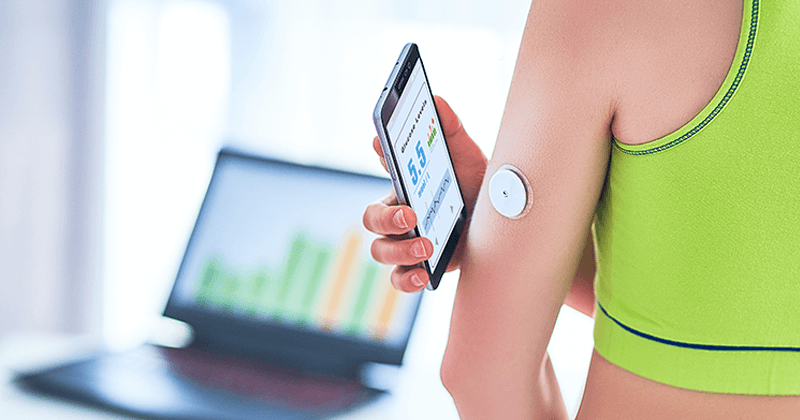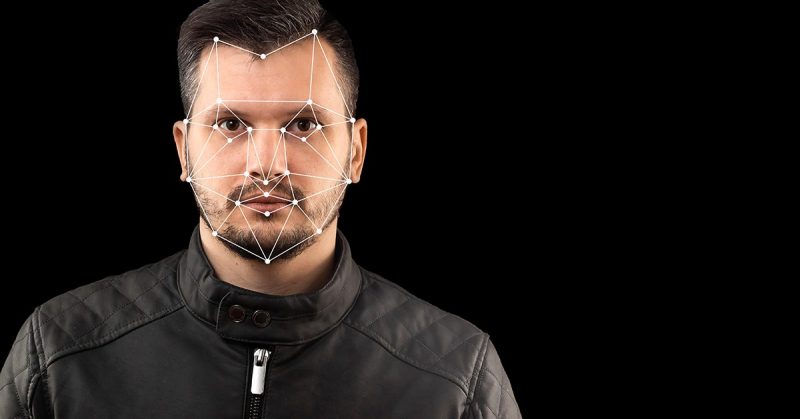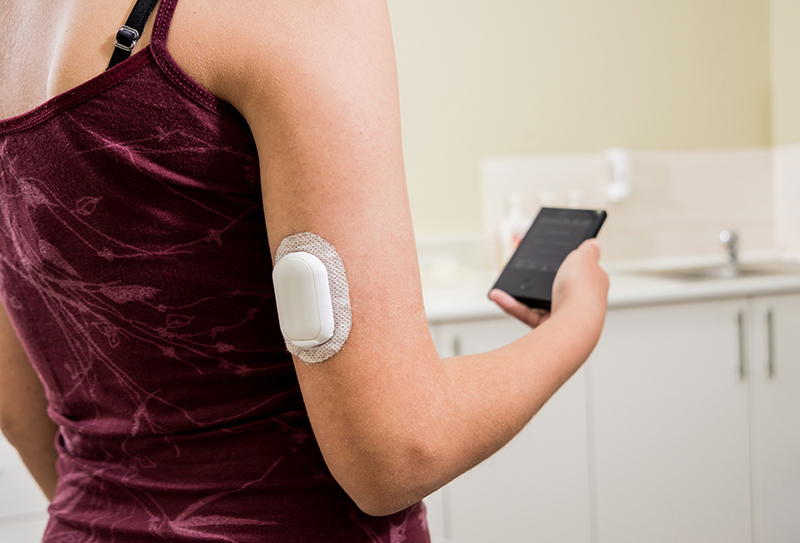Imagine if you had to regularly check your blood sugar level throughout your life. If you had to spend your days counting carbs, injecting insulin, and approaching everything with rigorous self-discipline. As a healthy person, I must admit: I find this hard even to imagine. That’s why I decided to conduct an experiment and experience first-hand the everyday problems a person with diabetes must face.
In this article, I present my observations after two weeks of wearing a glucose sensor so that you don’t have to imagine. You can hopefully use my experience to understand.
Faith in the power of technology
To be clear, I don’t have diabetes. But I do know people with both type 1 and type 2 diabetes. Type 1 diabetes is when the body is entirely dependent on external insulin dosing. Type 2 is when the body can produce a portion of insulin. But it’s not enough to regulate blood sugar levels — or the body can’t metabolize insulin correctly.
Given that I don’t have diabetes, I find it hard to imagine how it would feel to have to plan every meal. To have to compose every plate of food in such a way that it wouldn’t impact my blood sugar levels; to calculate how many units of insulin I’d need at any given time. I’ve also never experienced diabetes-related symptoms like waking up in the middle of the night with very low blood sugar — known as hypoglycemia — or waking up in the morning with very high blood sugar, called hyperglycemia.
I also haven’t experienced the feeling of my blood sugar spiking or dipping so rapidly it would make my head spin.
The only way I can know what it’s like is to listen to the people who’ve faced the challenges. And to read stories about the struggles, difficulties, small successes, and hard-hitting failures in their daily fight against the disease.
…But why put myself through all of this?
Well, because I’m a technical person. I have a biomedical background. And I believe that technology can revolutionize the way we treat conditions. I’m convinced we can use technological solutions to help people with different diseases to live a normal life — provided we understand the context.
And that’s where my story began.
Understanding the everyday problems of a diabetic
One day, I decided I wanted to be the co-creator of a solution that could help people with diabetes self-manage the disease. I decided despite knowing little about the technology diabetics use in their daily routine. At the same time, I had no personal experience of the problems those with the disease face.
Still, I was intent on starting this project. Now, my day had arrived. Plus, I knew what I wanted to achieve, and I had a plan — at least, so I thought.
But after the initial euphoria, I ran into a problem with my technical approach.
You see: I had decided to build an algorithm to predict glycemia over a specific time horizon. I had data from people with diabetes: about blood sugar level, insulin dosages, ingested carbs — and I’d prepared them to use as inputs for a machine learning algorithm.
But when I started working on the algorithm, trying to predict blood-sugar levels from historical data, I realized that data alone is not enough.
I struggled to interpret the results of my work, and I had no clue how to improve the algorithm I had built. Here was when the obvious dawned: I realized I could never solve the problem until I understood it: as you first have to walk in the shoes of the people you want to help before you can help them.
…but I couldn’t just ‘get diabetes,’ so I’d have to find a different path.
I joined diabetes support groups on Facebook. I researched the health problems associated with the disease. I read every article, book, and paper I could find on treating it. Then, I started to look at the technology: insulin pens, glucometers, insulin pumps — and continuous glucose monitoring systems.
This was when my interest morphed into a fascination.
What is continuous glucose monitoring? And how does it work?
Continuous glucose monitoring (CGM, for short) is my new favorite technology. It’s an ingenious solution that lets people control their blood glucose levels without needing to prick themselves.
The device comprises a small sensor that sits anywhere on the body — usually the arm — and a receiver, like a smartphone app or another device. The CGM helps people with diabetes limit their use of glucometers, only needing those devices when they want to check the accuracy of CGM readings or if they have hypoglycemia.
The products are extremely powerful, yet just a few companies produce continuous glucose monitoring/flash glucose monitoring systems. The most popular of them are:
- Abbott Diabetes Care (FreeStyle Libre)
- Dexcom
- Medtronic (Guardian Connect)
- Senseonics (Eversense CGM System)
Still, I saw the CGM as the most promising treatment technology. Moreover, it was a device I could actually use — then, one day, such an opportunity arose.
I wore a CGM sensor for fourteen days
I spent fourteen days with a small sensor on my arm. The plan was simple: scan my blood sugar levels as often as possible, note all carbs in my meals, track physical activity, and record any additional relevant information.
At least, it sounded simple — but was it?
Just one day into the experiment, and it became clear it wasn’t. Scanning the sensor was no issue, and a smart-band on my wrist recorded every physical exertion. However, counting the carbs in every meal was a horrible task.
I quickly turned to food tracking apps. But I just as quickly realized they didn’t meet my needs — so guess what happened next? Indeed.
I stopped recording how many carbs I ate.
I realized it’s far easier to track what you eat — especially when you have a diet plan — than to monitor the individual levels of carbohydrates, fats, and proteins. And even though my ‘simple’ plan had spectacularly failed, I still had a level of control over what I was eating, with an idea for what I would do next.
I stayed curious about how different foods and conditions — both internal and external — were affecting my blood sugar. And I decided to follow my blood sugar levels after different types of meals.
After fourteen days on the new plan, I can say this was not such a difficult task. Still, what if I had to do this for the rest of my life?
I’m not sure it would feel simple forever.
See also: How Artificial Intelligence Is Transforming Diabetes Care?
My observations after 14 days of wearing the sensor
After fourteen days wearing a continuous glucose monitor, I came to appreciate how well-adapted our bodies are to changing conditions:
- I recorded a significant difference in my blood sugar levels when eating light versus dark bread
- My blood sugar levels were recognizably lower after eating home-cooked meals versus foods prepared in restaurants or factories
- I noticed how differently my body reacted to the same meal consumed on different days
Once I studied my blood sugar levels in detail, I began to perceive the phenomena of satiety and hunger in a different light. I noticed how physical activity would affect sugar levels: and that I needed to factor in target intensity before deciding what to eat before exercise.
Every day, I found new internal and external factors that affected my blood sugar levels. Still, I didn’t have to worry about insulin dosing as my pancreas was coping with the spikes and troughs.
Each time my target glucose range rose above a threshold: my pancreas would deliver the right insulin dose to bring the levels back to where they should be.
And should my body enter a state of midnight hypoglycemia — my sugar levels once dropped to below 50 mg/dL — my liver would convert glycogen to glucose, which was channeled straight into my bloodstream to restore the balance.
Meaning each morning, I woke with sugar levels within, or very near, the normal range. So I’m grateful to see my regulatory system is working fine.
Unfortunately, not everyone can say the same.
Did the experiment meet my expectations?
Absolutely. My fortnight-long adventure showed me more than I ever expected. I still can’t say I’ve experienced everything a person with diabetes must face — but the experiment taught me how hard the life of a person with diabetes is.
Not least because it’s so challenging to maintain a steady blood sugar level and still live a balanced life without letting self-discipline slip.
After all, few people are dieticians, nutritionists, or personal trainers. And fewer people have unlimited access to such specialists. That’s why most of us are forced to trust the information we find online or elsewhere.
This leaves most people with diabetes in a state of self-reliance once they’ve received guidance from a doctor. And so, many search for technological or home-grown solutions, rather than hope that Big Pharma will ride to the rescue.
As a ‘healthy’ person who only had to follow a small part of the life of a person with diabetes — and for just fourteen days — I know it’s no small task. Moreover, I can see how it’s so much more than merely sticking to a meal plan.
Moments of resignation and powerlessness are understandable. But as with every disease, routine eventually sneaks in.
Even I started to scan myself at night if I noticed the reader within arm’s reach. And I can only imagine how someone with diabetes could, at some point, unwittingly dose insulin in a state of sleep-induced semi-consciousness.
Conversely, it’s just as easy to forget to take insulin in good time before a meal; or to fail to record a carbohydrate count, leaving you in an anxious state.
After all, everyone makes mistakes. But if you have diabetes, one mistake can have far-reaching consequences — and wearing a CGM helped me understand this point better than I ever could have hoped.
Fun facts from my fourteen-day CGM experience
|
Summing up my glucose sensory experience
Some problems seem easy to solve. But they rarely are: not until you understand the full context. However, you can’t always put yourself in the shoes of a person with a specific disease — and I’d never urge anyone to do so.
You need to find your own path to a solution. Mine just happened to involve technology because I’m a technologist at heart, and the approach held no risks for me.
My continuous glucose monitoring experience helped me learn how my body reacts to the meals I typically eat. Moreover, it gave me a more targeted approach to a problem that, until then, I could only look at the theory.
The experience has taught me I should not propose a solution without knowing all the aspects of the problem.
Moreover, it has shown me how we can use technology for more than just facilitating routine activities. We can try to create solutions for those who need them the most — in such an area, imagination is the only limit.
That’s why at DLabs.AI as well as DiabetesLab (our own project that supports people in controlling the illness using AI), we’re always looking beyond the norm.
In fact, we’re working on a solution that could one day help thousands of people with diabetes live a simpler life.
Do you want to learn more about our diabetes self-management app?
Contact us or just download our free demo.








